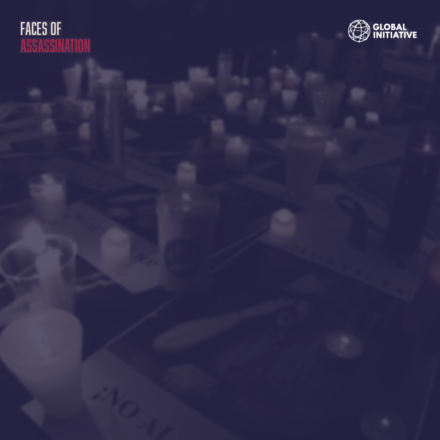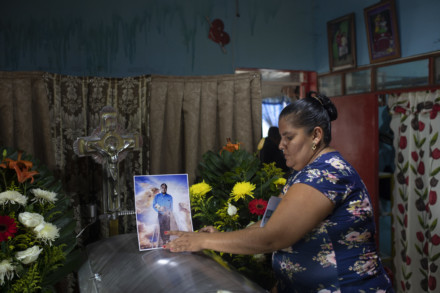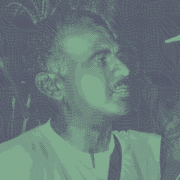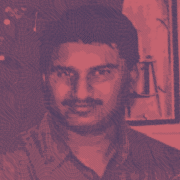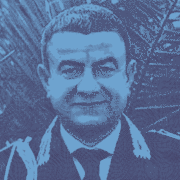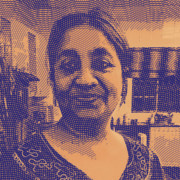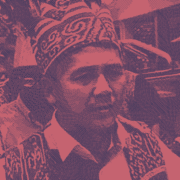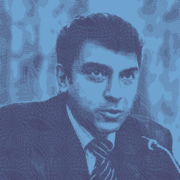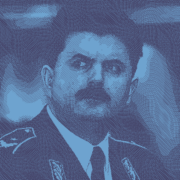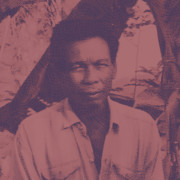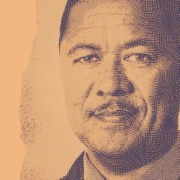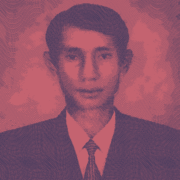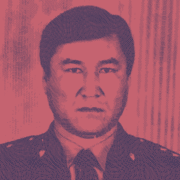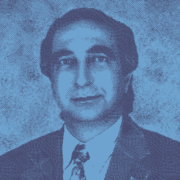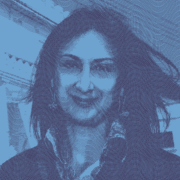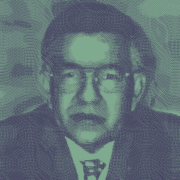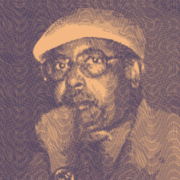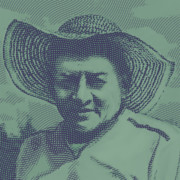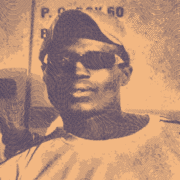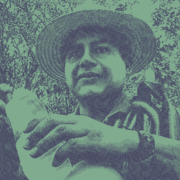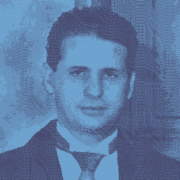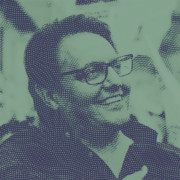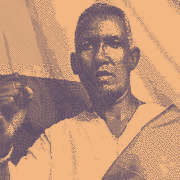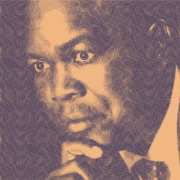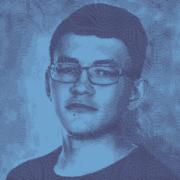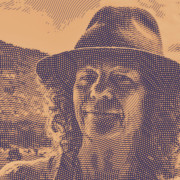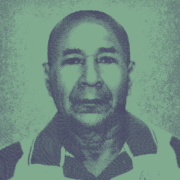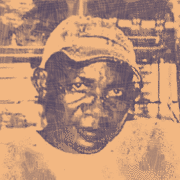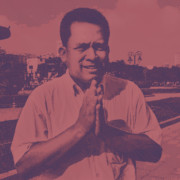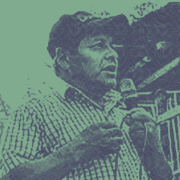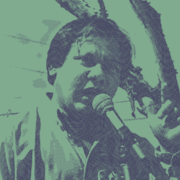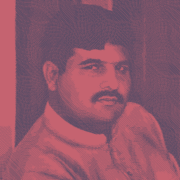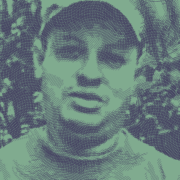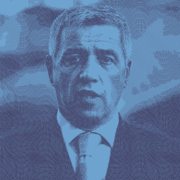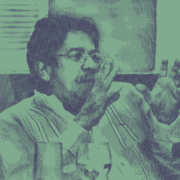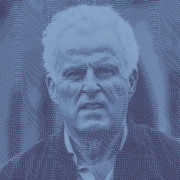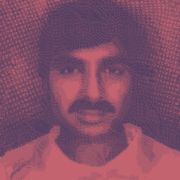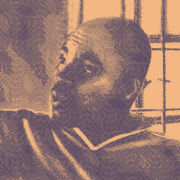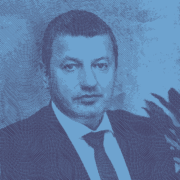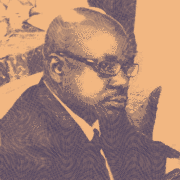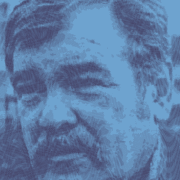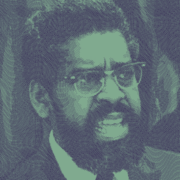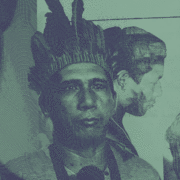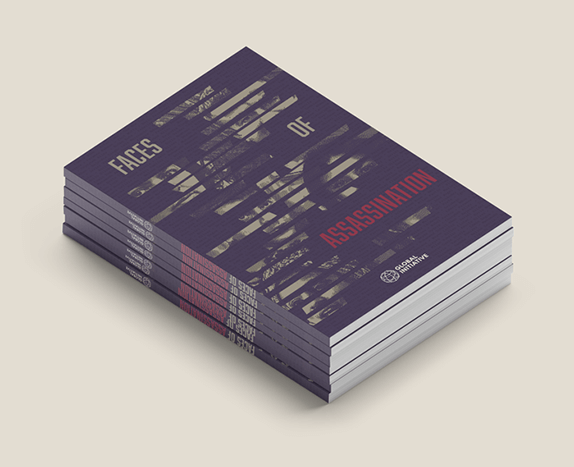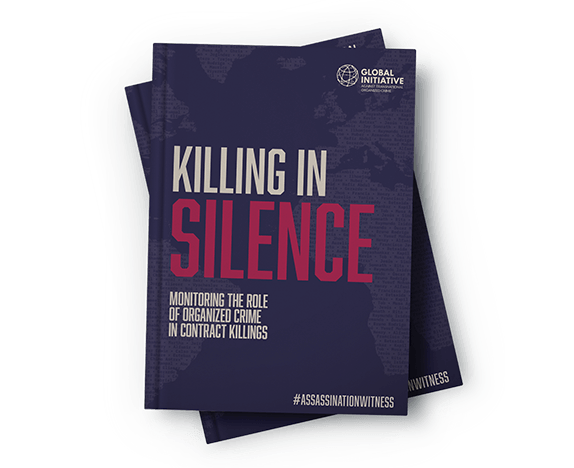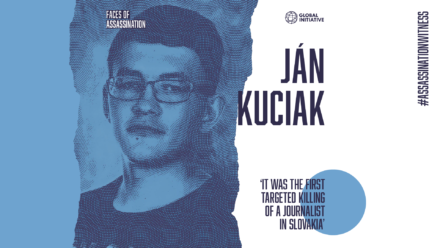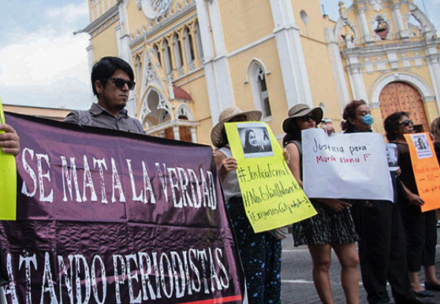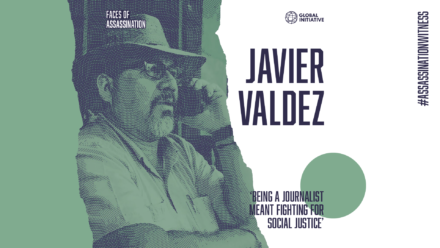WHO ARE THE ‘FACES’ TARGETED FOR ASSASSINATION?
Organized crime is indiscriminate in who it targets. Not only are conflicts between, and within, criminal groups often settled with violence, but such violence also regularly claims the lives of innocent people – those caught in the crossfire between rival criminal groups, or between criminals and the authorities.
There are also a very large number of those who are deliberately targeted for murder because they choose to take a stand against organized crime, or those whose job it is to investigate and end it.
In the years the Global Initiative Against Transnational Organized Crime has spent documenting and researching the criminal ecosystem, we have seen that, increasingly, criminal groups around the world are targeting those whom we can broadly categorize as civil society – people who choose to make social justice and the promotion of equality their life’s work. Such individuals are being assassinated because theirs are goals and aspirations and missions that confront and challenge the power, authority and local legitimacy of criminal interests the world over.
These are people seeking to do good by pushing back against organized crime, and its connections to economic and political interests. These are the people who are the subject of this study.
The people profiled in this book, Faces of Assassination, came from all walks of life; many of the ‘faces’ were journalists, community activists, political leaders, police officers; others were lawyers, businesspeople, educators or judges. No segment or class of society has been spared the impact of this form of criminal violence. They, and others like them today, were and are inspiring men and women, committed in their roles as human-rights organizers, political dissidents, academics, or whistle-blowers; all, in their own different ways, were campaigners for social justice.
Organized crime, of which assassinations are but one manifestation, is a difficult phenomenon to understand, and hard to define and investigate. With this book, we ask the international community to understand organized crime as a force that opposes the integrity, tenacity and principles shown by those who have stood against injustice and corruption, and paid the ultimate price for it. By focusing on the voices and stories of these faces of assassination, we hope to offer a different way of understanding organized crime as a phenomenon – and the very real impact it has on countries, communities and families.
Some of those whose profiles you will read here achieved public prominence within their lifetimes. Honduran activist Berta Cáceres, for example, was awarded the 2015 Goldman Environmental Prize, which brought her international acclaim and an audience with Pope Francis. Jacob Juma, another of the ‘faces’, one of Kenya’s wealthiest people, used his public platform to vehemently denounce and expose corruption in the Kenyan government.
But, although all are privately remembered, many are publicly forgotten. Some, after working tirelessly in the service of their local communities, became honoured posthumously because the way they were killed drew more widespread attention to their cause.
All are united in their quest for freeing their communities and societies from the corroding influence of organized-criminal actors.
In several of the profiles in this collection, the assassinated faces are remembered by friends, former colleagues and family members, and it is often repeated that the defining characteristics of these leaders was their strength of will and commitment to a sense of integrity and community spirit, even when threatened by reprisals from the underground forces opposing their objectives.
One may think of Slaviša Krunić, one of Bosnia’s wealthiest entrepreneurs, who was known for defying organized-crime bosses and corrupt political figures before he was shot dead on 22 April 2019. His relatives described how his commitment to his principles ultimately cost him his life.
Or of Rajendra Singh, an activist from India, who was described by his son-in-law as having ‘a madness in him for justice’.
Often, it seems, it was a personal driving sense of moral justice that brought such people into confrontation with those who would perpetuate injustice. Whether it was by writing an investigative report, refusing a bribe, exposing a corrupt individual or contract, all of those profiled here took a stand against organized crime in some way. By doing so, they paid with their lives because they refused to tolerate criminal governance or associated corruption.
Although the hallmarks of assassination are consistent across regions, there are some forms of assassination that are highly specific to particular social contexts, and are often shaped by long-standing criminal economies. Targeted religious killings in Nigeria, mayoral murders in Mexico and assassinations of journalists across Latin America have, for example, emerged as key regional trends in the course of our research.
There is one emerging theme that merits particular attention. Environmental defenders and activists are among those most frequently targeted for criminal assassination. Among those profiled here were organizers and activists opposing resource exploitation, such as leaders in the anti-poaching, illegal mining and ‘sand mafia’ community movements. These profiles are just a few examples of a vast problem of violence targeted at those who seek to protect our environment. According to one estimate, as many as 1 558 people in 50 countries were killed for protecting their environment and land between 2002 and 2017. As this publication went to press, two activists in Mexico who campaigned to protect the monarch butterfly were killed within days of each other, reportedly by groups connected to illegal logging.
While it is increasingly becoming understood that protecting the environment is the greatest challenge that humanity faces, it is simultaneously becoming clear that such an endeavour courts widespread violence meted out by criminal and corrupt interests.
THE RIPPLE EFFECT OF ASSASSINATION
Criminal groups weaponize violence to intimidate and silence those who would oppose their interests, to bury evidence that would expose them and bring them to justice, and to rapaciously obtain power and resources that are not rightfully theirs. Targeted killings are a criminal attempt to coerce and control, and ultimately a way in which to exercise criminal governance.
In this way, assassination is a mechanism utilized by criminal groups and corrupt actors to shape society and government in a way that better suits their own interests. As such, assassinations are a form of criminal control through which inequality is exacerbated, the rights of marginalized groups are quashed, and democratic institutions are hollowed out and made ineffectual – all intensifying a broader societal malaise.
Think, for example, of Derk Wiersum, a leading Dutch lawyer who was acting for a state witness in a case against a drug-trafficking network operating in the Netherlands when he was shot dead in Amsterdam. The immediate motivation behind his assassination was to derail this critical case, which could have brought down some powerful criminal figures. But, as some of Wiersum’s fellow lawyers suggested, his murder is also likely to make lawyers in the Netherlands apprehensive of that country’s key witness system, whereby suspects willing to give information on criminal operations are offered reduced sentences. Given the importance of this system in prosecuting complex organized-crime cases, shaking the confidence of those lawyers tasked with making the system work can only shift the balance in favour of organized crime.
Similarly, any institution suffers when one of their own is struck down: schools, businesses, places of worship, newspaper offices, police forces and the judiciary. Violence leaves an indelible and traumatic mark on countries, cities and communities worldwide. The consequences of an assassination can therefore be far-reaching – a ripple effect that has repercussions long after the shots are fired.
However, these consequences may be a force for positive change, as well as for negative. As in the case of Daphne Caruana Galizia, the ultimate impacts of an assassination may be difficult to predict, and may not become clear until years after the event itself. Her murder laid bare the full extent of the endemic criminality that she made the focus of her journalism. The revelations of the circumstances surrounding her death and the links to leading figures in government brought Maltese society to the streets in protest, mobilized the EU to call for prime minister Joseph Muscat’s resignation, and eventually led to his departure from office in early 2020.
In April 2016, on the fourth anniversary of his murder, the Cambodian government banned a documentary about Chut Wutty, a military officer turned environmental activist. The tactic backfired and, instead, for three days, the report, I am Chut Wutty, was widely distributed and viewed online throughout Cambodia, both by individuals on mobile devices and in private screenings organized on social media.
In April 2019, on the second anniversary of police chief Artan Cuku’s assassination, the Albanian government ceremonially declared him a national martyr. Cuku’s contract killer had been swiftly arrested two years earlier, but the Albanian authorities – motivated by the public pressure of the martyrdom – went one step further: the suspected mastermind was arrested in Greece in December 2018 after a warrant was issued by Albania, but he had not yet been extradited.
Thus, as people react to a killing and rally round the victim’s cause, assassinations may serve to galvanize communities, sustain resilience and fuel hope. Time and again, when a community bears witness to, memorializes, and remembers the sacrifice made and life lived, enduring change is more likely to result.
COMMEMORATING THE LIVES OF INDIVIDUALS WHO DIED FOR SOCIAL JUSTICE
It is precisely to tap into this positive effect that the Global Initiative Against Transnational Organized Crime initiated the Faces of Assassination project.
This book, which marks the launch of the initiative, assembles 50 profiles of those who have been assassinated by criminal groups since the start of the millennium. It is a compilation of men and women who have been murdered because they – like the examples given above – confronted, weakened or threatened criminal groups. The publication is the outcome of years spent bearing witness to the great impact these assassinations have worldwide, in developed and developing countries alike.
The profiles in the book span 40 countries in Africa, Asia, Europe and the Americas. They were commissioned by the Global Initiative and brought together the work of journalists working around the world, who spoke directly with friends and families of the deceased to place their stories in a local context.
Although the profiles have been selected from all over the world, these assassinations highlight certain places where organized crime has permeated political, cultural and economic systems of society, and regions where assassinations have escalated.
Each profile gives a snapshot of the life of an assassination victim; each tells something of the values or causes she or he stood for and the work that person did in the community or institution she or he represented. The profiles all seek to unpack as far as possible the circumstances that led to their murders, but – as is often the nature of organized crime – many of the details may well remain shrouded for ever.
We at the Global Initiative have been documenting the impact of criminal assassinations for several years now. Our Assassinations Witness database, for example, has used open-source data to compile information on assassinations in South Africa since 2000, and we are in the process of using the same methodology to expand the database to other countries in southern Africa.
This project forms just one strand of our broader research, which aims to document more widely the political-economic environments that enable organized crime, the shifting dynamics of criminal markets, and the impact of criminality and corruption on democratic institutions. Yet it is a part of our work that has a unique and particular value. Our work on assassination shows, in a real and tangible way, the human cost of organized crime, and how the force for change that these targeted individuals brought to their communities and institutions was eliminated. Their lives may have been tragically lost, but through these ‘faces’, counter-corruption may see afresh the value of their aims.
The Faces of Assassination project is the latest iteration of our work in this area, and this time it has a global perspective. The book is a springboard for a project that will continue to increase public awareness of the assassination of civil-society figures worldwide and ensure the sacrifice made by those who are lost to targeted killings is never forgotten.
The number of people who have been fatally targeted by criminal groups worldwide in the 21st century is difficult to ascertain with precision, but it is in the tens of thousands. Often, when researching one particular profile, anecdotal testimonies of dozens of people who had been killed in similar circumstances came to light, suggesting there are many others who have been either forgotten entirely or buried along with evidence that might have led to an arrest, prosecution or conviction of a corrupt officer, coercive businessperson or compliant bureaucrat.
Edwin Dagua is a case in point. A Colombian indigenous people’s rights activist killed in 2018, reportedly by dissident members of the Revolutionary Armed Forces of Colombia (FARC), Dagua was the 25th indigenous leader to be killed in Colombia in that year alone, and one of 431 human-rights defenders to be killed in the country between 2016 and 2018.
The profiles documented here, therefore, are intended to be not only real personal accounts, but they are also emblematic, in that they provide a broader representation of the kinds of groups of people who are targeted for assassination. In this sense, the individual stories explore how criminal violence seeks to shape society. While each person’s story is of course unique, they may also be understood as representative of the hundreds more whose stories are not told here. Although this is not a scientifically-based sample that can be analyzed and interrogated to show trends, by sharing these people’s stories, and describing the challenges and threats that they faced in incredibly difficult contexts, we can at least begin to paint a broader picture of the phenomenon.
TAKING A STAND AGAINST TARGETED KILLINGS
We have chosen to bring together these faces of assassination for several interconnected reasons. As mentioned, criminal assassinations can have a positive counter-effect by exposing the fault lines in societies, the fragility of national institutions and the extent of otherwise hidden corruption.
What became clear when researching this book, however, was that although many assassinations are reported, few, other than a handful of high-profile cases, receive global attention or galvanize action from around the world. We need to raise the profile of these cases, investigate and research the groups involved, monitor prosecutions, and place pressure on authorities to pursue investigations and strengthen weak or corrupted institutions that enable powerful criminal groups to operate with impunity. We need to urge the international community to not turn a blind eye to criminal violence, and to recognize that this form of violence is symptomatic of wider problems of weak governance and corrupted institutions – problems that reverberate beyond national borders.
Therefore, we hope that public campaigning – through this book and the ongoing Faces of Assassination project, and our other work on the issue – will raise awareness of the sheer number of assassinations globally and, just as the public mobilization following Daphne Caruana Galizia’s murder did, help to expose the wider societal ills that bring about such weaponized violence in the first place.
The actions that the GI-TOC have committed to take are therefore fourfold.
First, and most importantly, we will continue to bear witness to the ultimate sacrifice that these people have made, and pay homage to their bravery and integrity in the face of violence. We will be continuing to commission profiles that tell the story of their lives and the causes for which they lost their lives, and we hope that these profiles will serve as an enduring public tribute for their families, friends and colleagues, many of whom continue to face the same dangers and confront the same criminal interests that took the lives of their lost ones.
Secondly, our global Faces of Assassination project will continue to keep the individual cases in the spotlight, and demand justice and due processes in each and every case. On every death anniversary, we will be actively following up on the cases of those assassinated and demanding that due process is served: that the cases are investigated and the perpetrators are brought to justice. We will be seeking justice for those who ordered the killing, not just those who pulled the trigger, regardless of how high up in society or the state they may go. We will highlight cases of inaction and of obfuscation, and we hope that by increasing the public and international prominence of these cases, it may put pressure on the authorities to investigate these cases and bring those responsible to justice. And we will try to support the creation of tools and processes in the hope that this will improve both global and national responses to assassinations, and contribute to the global effort to make the work of anti-corruption activists, lawyers, journalists and human-rights defenders around the world safer.
Thirdly, we will seek to join forces with other civil-society organizations who are also championing this cause and undertaking selfless advocacy work. The Committee to Protect Journalists, for example, maintains a database of journalists killed in the course of their work and that organization has done a great deal to bring the issue into the public eye by drawing attention to the grave threat to free speech that violence towards journalists represents. The cause of environmental defenders are championed by the NGO Global Witness and by The Guardian. But many of those activists killed do not have anyone to champion their cause, educate and build capacity for prevention, or support the families of victims. The GI-TOC, through its research, advocacy and the Resilience Fund, will fill that void and will try to catalyze the creation of a sustainable framework in collaboration.
Finally, we develop and maintain a global database of assassinations, to ensure that there is a reliable and regular means to monitor what is regrettably becoming a global phenomenon. This database, which will sit in the public domain, will allow estimates of the scale of the problem, and allow trends to be analyzed. The global monitor will create an irrefutable evidence basis upon which action can be demanded from states and multilateral bodies to respond.
Brought together, our aim with these four initiatives is to draw public attention to the fact that, across the world, those who stand up for transparency and seek to maintain public integrity are facing a grave threat of violence. It is essential that we work to support civil society, activists, journalists and others who may be at risk – whether this is by providing financial and legal support, or through advice, training and protection, or by building transnational networks through which these people can share knowledge and experience.
At the Global Initiative, we have seen from our own experience that civil society – both at local and national level, and particularly where state governance is eroded, weak or compromised – is often the greatest driving force for positive change. Although this is what puts them at risk of being targeted by corrupt and criminal groups in the first place, it is also the very reason why it is essential to protect and support civil society in every way we can.
Mark Shaw Director, Global Initiative Against Transnational Organized Crime


